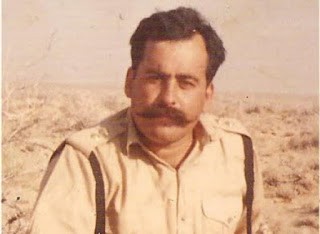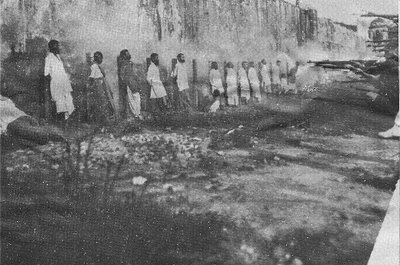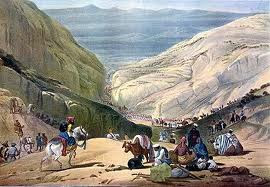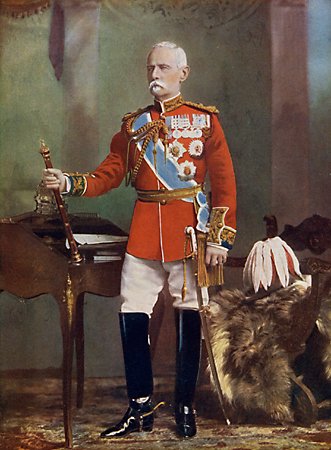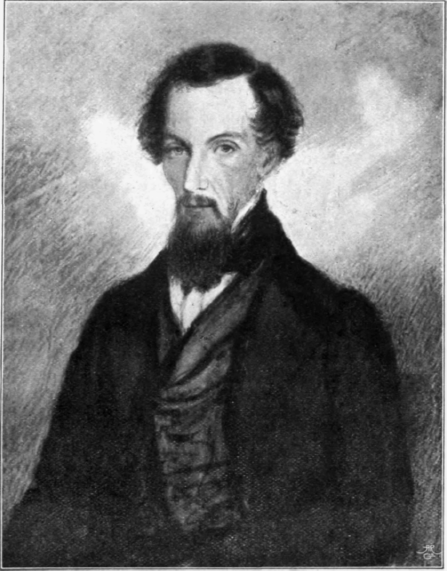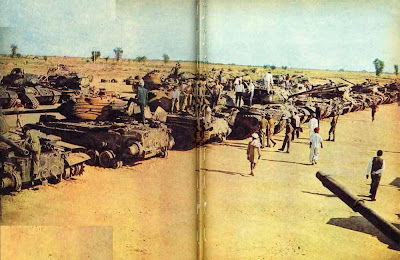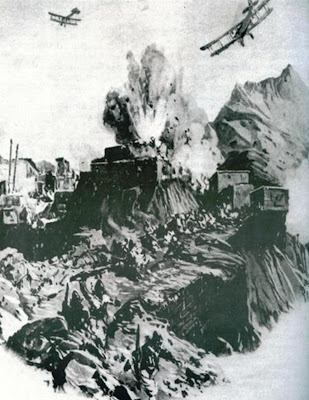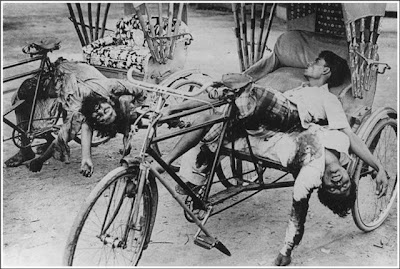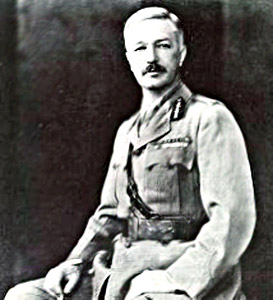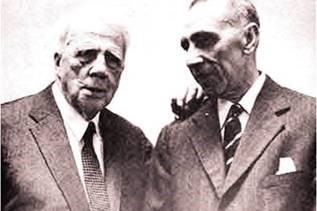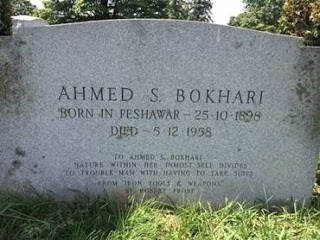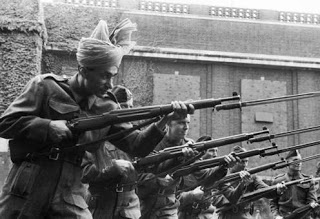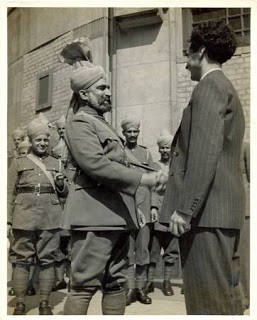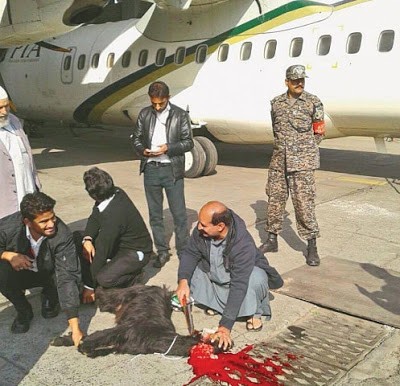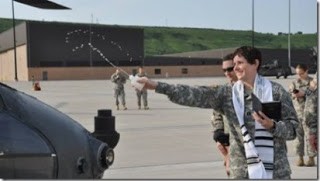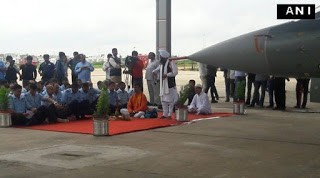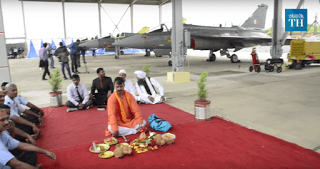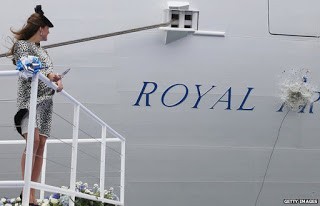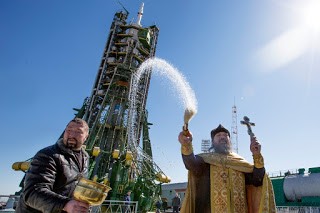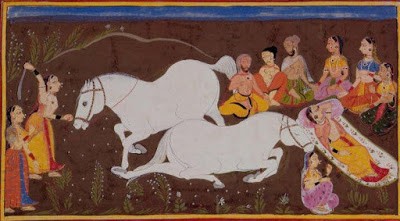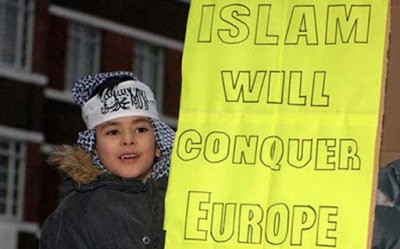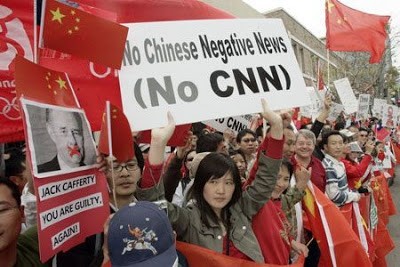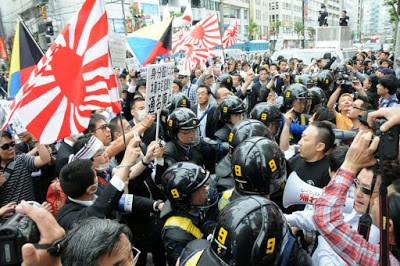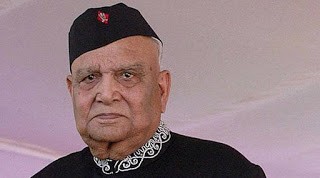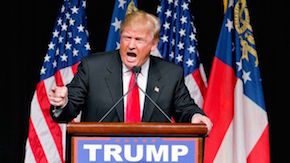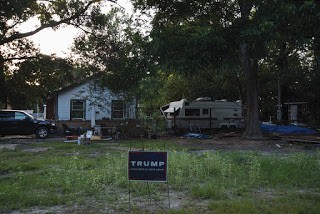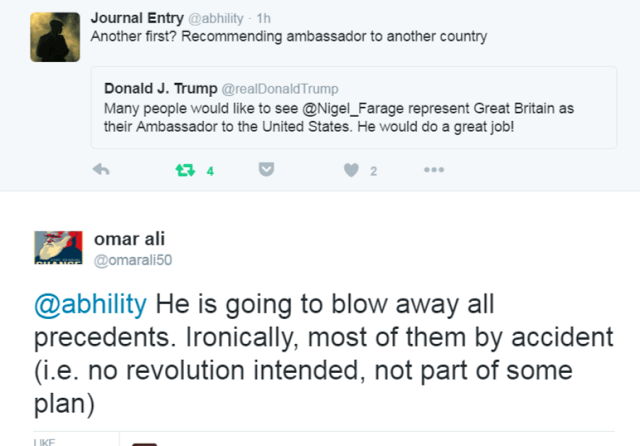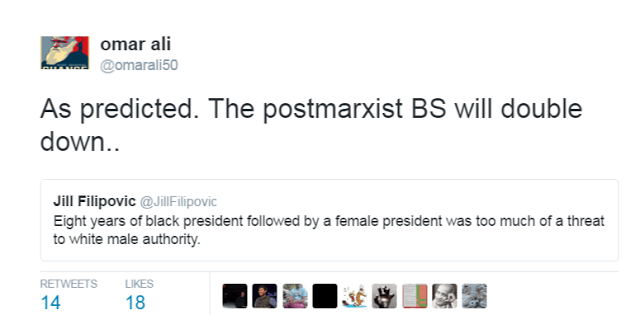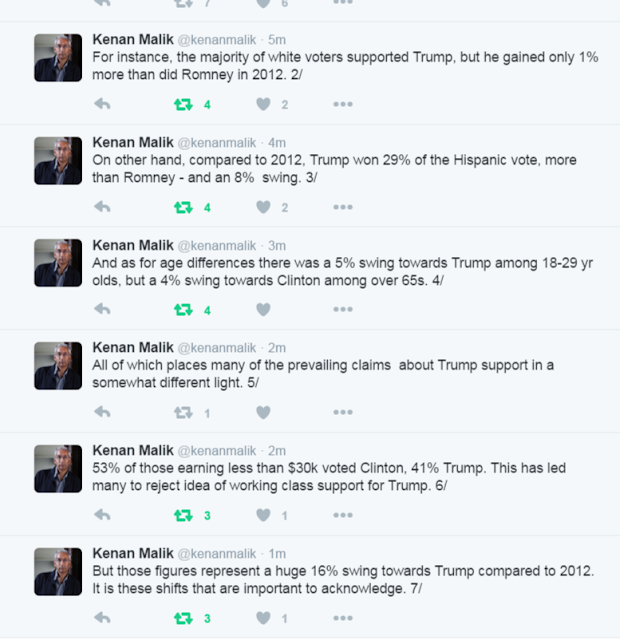The following review was written by Major Amin in 2008. Things have changed since then and the Russians and Chinese are now said to be on board with Pakistan’s Taliban plan. We will see. But as usual, an acerbic but well informed review from Major Amin..
17 March, 2012 Crossed Swords-Shuja Nawaz Reviewed by Major Agha H Amin (Retired) September 2008
Crossed Swords , Pakistan,Its Army,and the Wars Within-Shuja Nawaz , Oxford University Press,Pakistan , 2008 700 pages; 13 black and white photographs, 6 maps; ISBN13: 978-0-19-547660-6ISBN10: 0-19-547660-3
Crossed Swords is the latest addition to the list of books dealing with Pakistan Army . Written with an eye on the Western audience by a Pakistani who has settled in USA the book is a welcome addition to books on Pakistan Army.It contains some new sources and some new information .Unfortunately most of the information is anecdotal and the narrators are extolling their own performance.
The author’s viewpoint is somewhat subjective as he is a brother of one of the ex chiefs of Pakistan Army General Asif Nawaz. The book contains some factual errors , some possibly typing errors,expected from Oxford University Press Pakistan which has a reputation of doing this.Some errors are however historical and factual and were entirely avoidable.On page 8 3rd Light Cavalry of Meerut fame is written as 3rd Light Infantry and on page 9 becomes 3rd Light Cavalry.On page 22 Ayub Khan is placed in Assam regiment though Ayub’s battalion officer Joginder Singh specifically stated that Ayub Khan was in Chamar Regiment in WW Two.On page 426 Naseerullah Khan Babar is promoted to lieutenant general and similar fate befalls Major General Sarfaraz Khan on page 223. 13 Lancers becomes 13 Cavalry on page 305.On page 470 he changes the ethnicity of Sardar Balakh Sher Mazari a Baloch Seraiki by calling him a Punjabi , an honour that no Baloch would like to have. A far more serious error Shuja makes while discussing the ethnic composition of Pakistan Army on page 570.He states that Sindhis and Baluchis are 15 percent of Pakistan Army.This is a serious distortion of history.The term Muslim Sindhi and Baluchi abbreviated to MS&B was given to
Ranghar/Kaimkhani/Khanzada Rajput recruitment in Pakistan Army in 1950s.The aim was to rationalise the recruitment of Ranghars in Pakistan Army. Later the usuper Zia in order to appease the Sindhis created the Sindh Regiment but Sindhis as far as my research reveals are far less than Ranghars/Kaimkhanis/Khanzada Rajputs in the army.The Ranghars are a significant class in fightig arms, being at least 35 % of armour and distinct from Punjabis.The Baloch are hardly represented in the army.As a matter of fact the Pakistan Army has such a reputation in Balochistan that no Baloch would like to join it.All thanks to General Musharraf,Zia and ZA Bhuttos policies.
These are expected errors and more so from Oxford University Press Pakistan known for changing authors photograph with those of their uncles on jackets of books as they did with Colonel M.Y Effendi in his book Punjab Cavalry published by Oxford University Press in 2007.The old prince narrated to me the sad story when I met him and was also quite cheesed off by the fact that the princess running Oxford Pakistan is too arrogant to meet any author or to even discuss anything on the telephone. It is significant to note that so disgusted did Effendi become with this Ameena Syed of Oxford that he withdrew his books rights from Oxford University Press Pakistan.Its possible that Effendis book was deliberately sabotaged by Ameena Syed as her brother brigadier Javed Hussian was with Effendi in the tank corps and both did not get along well.
The above errors are insignificant.However Shuja has made some asertions which can be classified as serious errors or even distortion of history.On page 71 he asserts that calling off of Operational Venus by Pakistan’s civilian government was one of the reasons why the 1947-48 war failed.I state this because the sub title of the chapter is ” Why the War Failed”.On the other hand he fails to point out the major fatal decision when the Pakistani government refused to allow the armoured cars of 11 PAVO Cavalry to assist the tribesmen in breaking through to Srinagar.Those who are not familiar should know that the main reason why the tribals failed to take Srinagar was because Indian armour counterattacked them and destroyed them at Shalateng. This fact was discussed by Brig A.A.K Chaudhry also in his book. The Operation Venus plan came much later.At that time the Indian Army was well established in Kashmir and well poised to meet any threat.
Very few participants of the Kashmir War have left any written accounts of their war experiences. General Iqbal who participated in the war and later on rose to the rank of full general and Chairman Joint Chiefs of Staff Committee, long after the Kashmir War made one very thought provoking remark about the Kashmir War in an article in the Pakistan Army Green Book 1992. This particular publication was sub titled ‘Year of the Senior Field Commanders’. Iqbal wrote; ‘During 1948 Kashmir Operations I saw one senior officer sitting miles behind the frontline and counting availability of mules and rations. He had relegated the fighting to a senior battalion commander .
In 1963 once Major General Fazal I Muqueem Khan in his book The Story of Pakistan Army .Fazal thus wrote; ‘To the Army’s horror, Pakistan during her greatest hour of triumph in Kashmir agreed to accept the ceasefire…it was difficult to understand why Pakistan let that opportunity pass. Was it assumed weakness; or as a result of pressing advice; or from misplaced chivalry towards an unfriendly neighbour in distress? Whatever the reason,Pakistan’s reluctance to accept the risks of continuing the war,cost her Kashmir at that time. It was a risk worth taking.” But note that the Pakistani attack force collected for Operation Venus consisted of about six infantry battalions and two armoured regiments. To oppose this the Indians had two infantry brigades (50 Para Brigade and 80 Infantry Brigade) .In addition there were two armoured regiments in the same area i.e. Central India Horse and the Deccan Horse . In addition the Indians also possessed more than 10 other armoured regiments which were not in Kashmir but in Punjab or Western UP and could move to Kashmir. We shall see in 1965 how Pakistani armour functioned and the reader can keep that as a yardstick in order to appreciate how Pakistani armour and infantry would have behaved in Operation Venus; had it ever been launched! Fazal does not explain how the capture Of Beri Pattan bridge would have led to complete collapse of Indian hold over Kashmir, apart from temporary severing of the line of communication to Poonch. Greater part of the Central India Horse was at Nowshera close to Beri Pattan while Deccan Horse in Chamb-Akhnur area was also within striking range and the battle would have been a hotly contested affair!
Shaukat Riza did not take the extreme viewpoint similar to Fazal’s when he wrote his book on Pakistan Army.He merely said that ‘On December 30 both sides saw the wisdom of cease-fire’. Lately in an article General K.M Arif adopted a more rational viewpoint, when he stated that the Kashmir War of 1948 was mismanaged simply because Pakistan was not in a position to fight it successfully summing it up by stating ; ‘It is too hazardous a risk to fight a war on ad hoc basis’.
On the other hand, there is no doubt that Pakistan was in a favourable position to win the Kashmir War at least till the first week of November. Mr Jinnah exhibited great Coup de Oeil when he ordered Gracey to employ two brigades and advance with one brigade each towards Jammu and Srinagar. But Mr Jinnah was unlucky in possessing no one like Patel and his Prime Minister and his entire Cabinet proved to be an undoubted failure at least as a war cabinet!
Mr Jinnah’s decision not to have a Pakistani C in C, although taken in the best interest of the country and the Army as Mr Jinnah saw it, ensured that the British acting C in C procedurally blocked the execution of Mr Jinnah’s orders in October to attack Kashmir. Pakistan was unlucky in having a man like Iskandar Mirza at the Ministry of Defence.Mirza did not advise Mr Jinnah correctly and the fact that he had hardly served in the Army and did not understand military affairs further ensured that Mr Jinnah and the Prime Minister remained as ignorant as they were about military affairs as they were when they were in high school.
But again, it is incorrect to criticise Liaqat for Operation Venus since in December 1948 the Indian position was much more secure than in 1947.Liaqat can be criticised for not ever visiting Kashmir while the war was on and for not standing by Mr Jinnah in pressurising Gracey in October 1947 to order the Army to attack Kashmir.Had a Pakistani C in C been appointed even in December or in March 1948 the Indians may not have held on to Poonch- Nowshera area at least. Had Major Masud been allowed with his armoured cars on Domel-Baramula Road despite Ghazanfar Ali and Sher Khan’s objections;Srinagar may have been captured by the Tribesmen by first week of November 1947. The Indians were lucky in having comparatively more regular army officers who led from the front as is evident from higher officer casualties among Indian Army officers above the rank of captain vis a vis the Pakistan Army.
The treatment of 1857 is also very superficial.The author states that of the Bengal Army which rebelled, some 80 % were Purbias (page.7) , but fails to point out that the vast majority of cavalry which led the rebellion notably at Meerut i.e 3rd Light Cavalry which actually captured Delhi was Muslim and mostly Ranghar Muslim.His use of the term British for the pre 1858 period is also factually incorrect as India till 1858 was ruled by the English East India Company using mostly its private Bengal Army ,Madras Army,Bombay Army , its private European regiments and some regiments on rent from British Army to conquer entire India. In his discussion of Martial Races Theory the author totally ignores the fact that Punjab Loyalty in 1857 to the British was one of the main reasons why martial races theory was evolved.This is a simple point noted even by British writers like Philip Mason.The author also fails to note the politically important fact that the English East India Company’s army was the knight in shining armour which saved the Muslims of Punjab and settled areas of present Pashtun NWFP from the Sikhs who were using Muslim Mosques as stables and gunpowder magazines and plastering their walls with cowdung. Perhaps this fact does not suit the “martial races” who were ruled by a 10 % minority (the Sikhs) in the Punjab and settled Pashtun areas (for more than four decades in Punjab and some two decades in modern NWFP’s settled districts).
The author talks about martial races theory and thinks that martial races theory was all about Punjab and Frontier as it is now but perhaps does not know that one of martial races theory’s most famous exponent Major General Macmunn regarded the Khanzada Rajputs of Firozpur Jhirka as the finest fighting race in India. The author also fails to note that the Sikhs were in majority in the fighting arms till First World War and were reduced to a minority by being replaced with Punjabi Muslims after First World War because the Punjabi Muslims were regarded as phenomenally loyal, even against Muslims, by the British.Thus the author conveniently ignores two important developments of WW1 i.e the Singapore rebellion of 5th Light Infantry by Ranghar Muslims and the tribal Pashtun mutinies against British as a result of which tribal Pashtun recruitment was reduced to the gain of Punjabi Muslims.
In his discussion of Ayub Khan the author totally ignores allegations about Ayub’s tactical timidity in Burma.This incident was discussed by three writers of the time; Major General Joginder Singh of Indian Army who was Ayub’s battalion mate , Sardar Shaukat Hayat who was an ex Indian Army officer and Major General Sher Ali Khan.In an article Brigadier Nur Hussain a reliable authority did state that Ayub Khan was close to General Gracey because they drank together. The authors discussion of old officers is also partial.On page 31 he notes that Brigadier Gul Mawaz got an MC , a medal which many earned but fails to note that Major General Akbar Khan won a DSO which is higher in scale than MC.On page 33 he states that ” Akbar Khan who gained notoriety in Kashmir …..” .Akbar Khan was the pioneer of Kashmir war but Shuja thinks that he was notorious! A strange assertion. Mr Jinnah’s historic decision of creating two infantry battalions of Bengalis is also not at all discussed by the author.It may be noted that Ayub Khan refused to expand the East Bengal Regiment till 1966 as a result of which the Bengalis were further alienated for not being given the due share in the armed forces.this decision was reversed by Yahya Khan in 1966 but by then it was too little too late.
The authors analysis of the origin of the officer corps is also superficial.He fails to note the 50 % ranker quota that the British kept for Indian rankers in the officers selected for IMA Dehra Dun in order to keep the Indian officer corps slavish and backward. The author does note the fact that Pakistani SSG captured Indian War Plan on Samba Kathua road before the war actually started but fails to note the fact that it was Pakistan’s Military Intelligence led by Director Military Intelligence Brigadier Irshad who refused to give any serious thought to this discovery and dismissed it as an Indian ruse! This was revealed to this scribe in an interview by Major General Naseerullah Khan Babar in March 2001.
The most serious distortion of history committed by Mr Shuja Nawaz is on page 226 when he gives the credit of 25 Cavalry’s action of 8th September 1965 at Gadgor to Brigadier Abdul Ali Malik.The authority he quotes is Farouk Adam , then a very junior officer and not in 24 Brigade Headquarter. It must be clarified that a good military historian or analyst’s prime motivation in all writing has been to endeavour to write “what men did” rather than what “they ought ideally to have done” or what “someone later with the benefit of hindsight tried to portray , what they had done”. Thus the analysis of Chawinda Battle done with pure loyalty to service without any inter arm rivalry or nationalistic motivation. Pure and unadulterated military history filtered dispassionately separating fact from fiction and myth from reality. History as
Frederick the Great once said can be well written only in a free country and ours has been continuously under civil or military dictators since 1958. I maintain as one great master of English prose said that “all history so far as it is not supported by contemporary evidence is romance”! Battle of Chawinda was thus not romance! What many in this country wrote and was outwardly military history was essentially “Romance”! Inspiring, superhuman but a myth promiscuously mixed with reality!Chance plays a key role in battle and at Chawinda chance played a very important role! Nisar, when he deployed 25 Cavalry did not know what was in front of him ! KK Singh Commander 1st Indian Brigade also did not know what was in front of him! This mutual ignorance saved Pakistan on that crucial day ! Later heroes were created! I repeat “Heroes were created” ! The hero had to be from the Salt Range however ! At least Shuja Nawaz wants it this way ! What were the key facts? Most important tangible fact was “casualties” ! These were deliberately hidden since these would have let the cat out of the bag! Everyone would have discovered who really fought and who got gallantry awards on parochial,regimental or old boy links! How many were killed in the biggest military blunder “Operation Gibraltar”! This is Top Secret ! How many infantry men died at Chawinda? Again no mention of any figures! The real
motivation here is not national interest but to preserve or more important to “guard reputations”
Now lets talk about the broad front deployment that Shuja Nawaz refers to .There is no doubt that the “broad front deployment” was done by Nisar and Nisar alone and Brigadier Abdul Ali Malik had no role in it. It is another matter that Nisar also did not know what was in front of him. It was like Jutland when both contending fleets were running towards each other at express train speed. Why Nisar behaved as he did and what actually happened even today is hard to understand, whatever anyone may claim now with the benefit of hindsight! Shuja Nawaz here in his 600 page book offers no tangible proof that the actions of 25 Cavalry had anything to do with what Brig A.A Malik told Nisar. Nisar was told to “do something” as clearly stated by an authority no less than Pakistan Army’s official historian Major General Shaukat Riza, apparently not from Jhelum or from North of Chenab by a twist of fate. There is no doubt that Nisar did something without the least clue of what was in front of him. The important thing is that Nisar did something rather than getting paralysed into inertia and inaction! The “Do Something” order by Brig A.A Malik to Lt Col Nisar CO 25 Cavalry should not have been glorified to something higher by Shuja Nawaz simply on authority of an article written by a person who was a company 2IC in an infantry battalion of 24 Brigade and that too only in 1992.This is a serious historical failing.At least in a military historian but is the Oxford University Press Pakistan run by professionals? One may ask Colonel M.Y Effendi. The fact that Abdul Ali Malik was a close relative of Shuja Nawaz’s wife makes this distortion a distortion par excellence. The same words of Brig A.A Malik ” Do Something” were repeated by Nisar in his article published in Pakistan Army Journal in 1997. Perhaps Shuja Nawaz did not read all the accounts of direct participants.Perfectly excusable as he is based in USA.But not good military history certainly.The fact is that the 25 Cavalry on 8th September 1965 was functioning in a vacuum.Brig A.A Malik had no clue about armour warfare and Nisar had no higher armour headquarter to guide him.. 24 Brigade had two infantry units, one which had been overrun and dispersed on 8th September i.e 3 FF and 2 Punjab which was at Chawinda. The crucial action took place at Gadgor few miles north of Chawinda in which 25 Cavalry faced the entire Indian 1st Armoured Division. This was an extraordinary situation and Nisar acted on his own best judgement since Malik had abdicated to Nisar by stating that he should “do something”. It is another thing that Nisar also did not know what was in front of him and acted boldly and unconventionally. Had he known what was in front of him he may have been paralysed by inertia and inaction! But this is speculation and some part of history always remains unfathomed and hidden! Nisar acted through sheer reflex and deployed his unit in an impromptu manner. The fire fight which took place at Gadgor between 0900 hours and 1200 hours was a pure tank versus tank affair. 25 Cavalry versus two leading tank regiments of Indian 1st Armoured Division! Thus the Indian Armoured Corps historian stated “The Armoured Brigade had been blocked by two squadrons of Pattons and in the first encounter had lost more tanks than the enemy had…the worst consequence of the days battle was its paralysing effect on the minds of the higher commanders. It took them another 48 hours to contemplate the next move. This interval gave Pakistanis time to deploy their 6th Armoured Division…in fact the golden opportunity that fate had offered to the 1st Armoured Division to make worthwhile gains had been irretrievably lost” (Refers-Pages-393- 394-History of Indian Armoured Corps-Gurcharan Singh Sandhu-Vision Books-Delhi-1990). Thus the Indians acknowledged “This regiment’s (25 Cavalry) performance was certainly creditable because it alone stood between the 1st Indian Armoured division and its objective, the MRL canal”.(Refers-Page-395-Ibid). This is not the only source.Major Shamshad a direct participant has already stated on record that SJs were awarded to some officers for an attack in which not a single man was killed on both sides! Here he refers to Major Farouk Adam.
This reminds me of an incident in armour school Nowshera in 1991.I was an instructor in Tactical Wing.The Senior Instructor incharge of the Young Officers Tactical course asked us , ” Should we give an Alpha Grade” . My lone reply was that no Sir , since Armour School gives Alpha to sons of generals only .This was a norm then .The Infantry School where I did the junior tactical course but later on it started giving alphas after 1985 to oblige some sons of generals.But that is how Pakistan Army is. The historical fact remains that 25 Cavalry was part of 24 Brigade but all that Nisar its CO did on the crucial 8th September at Gadgor was based on his own judgement. On 9th and 10th September no fighting took place as Indians had withdrawn their armoured division to the crossroads. On 10th September, 6 Armoured Division took over and 24 Brigade was a part of 6 Armoured Division. On 8th September there was a vacuum and Nisar acted in a sitaution which can be classified as one characterised by “absence of clear and precise orders”! Shaukat Riza’s book is basically a compilation of existing facts. It has historical value since Riza was allowed access to official records.Shaukat had no axe to grind . Shuja Nawaz by his own confession is a close relative of A.A Malik. Shuja also forgets Brig A.A Malik’s request to withdraw when Indian tanks had crossed the railway line on 16th September and occupied Buttur Dograndi and Sodreke. This fact was brought to light not by the much criticised Shaukat Riza but by the then GSO-2 of 6 Armoured Division Major (later General K.M
19. Arif), first more bluntly in Pakistan Army Green Book-1993 and again a little tactfully in his recently published book Khaki Shadows. Thus no connection with 3 FF, an infantry unit which as far as I know suffered more casualties than any other infantry unit at Chawinda. 3 FF fought admirably but was launched thoughtlessly as brought out by Major Shamshad in his letter published in Sept 2001 DJ and consequently suffered enormous casualties at Sodreke-Buttur Dograndi area. Shamshad was the tank troop leader in support of 3 FF when it disastrously attacked Buttur Dograndi. In opinion of Shamshad, the attack had failed not due to any fault of 3 FF but because of poor planning by Commander 24 Brigade. Even at formation level Chawinda was not a big battle in terms of casualties since the Indian 1 Corps suffered less casualties than 11 Indian Corps in Ravi Sutlej Corridor. A.A Maliks poorly planned counterattacks leading to bloody casualties for Pakistan Army were also discussed by Major General Fazal i Muqeem in his book on 1971 war. http://pakistan-army-interviews.blogspot.com/2010/11/bara-pind-jarpal-charge-of- pakistans.html
On page 233 while discussing the main Pakistani offensive in Khem Karan, the author fails to point out that the Pakistanis had a 7 to 1 superiority in tanks and yet they failed. Further he fails to point out the fact that major failure of Pakistani 1st Armoured Division occurred in the 4th Brigade where its commander Brigadier Bashir ordered its tank regiments every night to return to leaguer at their start point every night thus abandoning all territory they had gained during the day. In the treatment of Chamb Operation of 1971 the most significant decision of Major General Eftikhar to switch from North to South is not discussed at all.This was one of the most landmark operational decisions in history of Pakistan Army.The author also fails to highlight the cowardly action of then Brigadier Rahimuddin Khan in not joining 111 Brigade on pretext of dealing with Shiekh Mujibs trial. Of course this great warrior later rose to full general in the Pakistan Army.
Shuja also gives no thought in his worthy analysis to Pakistan Army’s launching a pre-emptive attack on India in September 1971.This if done in the words of Indian Commander Western Command General Candeth would have thrown all Indian plans to attack East Pakistan to the winds . (Refers-The Western Front -Candeth). In the chapter dealing with Z.A Bhutto Shuja does not discuss the cadrisation plan proposed by ZA Bhutto and his tasking of Pakistan Army’s Military Operations Directorate to implement it. This plan if implemented would have reduced the standing army in size and enabled the Pakistani government to spend more money on training.This plan was scrapped by Zia in 1977.
On page 477 he states that ” Abbasi was the man who had been removed from his command in the Kargil area of Kashmir…………after having undertaken an unauthorized and costly foray into Indian held territory in 1990‿.Now this comes straight from a man who repeatedly claims nearly total access to all direct participants. Now the facts of the above situation. Poor General Abbasi had done nothing in Kargil. First the use of the word Kargil by Shuja Nawaz is unwarranted and irrelevant and above all totally out of context! Abbasi’s command was not just Kargil only but a much larger area i.e. the entire Northern Areas of Pakistan. Second the foray he Shuja refers to was not launched in 1990 but in 1992 when Shuja Nawaz’s very own brother was the army chief! Third the foray was not as unauthorized as claimed by Nawaz. Abbasi was commanding the FCNA, part of 10 Corps Rawalpindi and his corps commander Lieutenant General G.M Malik,a man of extreme ambition had a tacit understanding with Abbasi that in case he succeeds he was a part of the team and if Abbasi failed G.M did not know about the attack ! A very typical and known phenomenon in all armies, organizations and bureaucracies all over the world. Fourthly poor Abassi’s unauthorized foray was not in Kargil but in Siachen an area far away from Kargil. Lastly Abbasi had been packed off to the FCNA in late 1990 a time when snow made any foray in Kargil or Siachen impossible. This happened once Abbasi expressed disagreement with the then corps commander 4 Corps Lahore Alam Jan Mehsud.The incident was narrated by this scribe to then Brigadier Salahuddin Tirmizi (later lieutenant general).Alam Jan thought that Abbasi should be posted to FCNA where he could catharsize his spirit of Jihad on those snowy rocky icy pinnacles of Siachen Glacier. Catharsize he did, with disastrous and bloody results in 1992., but not 1990 as this “privy to inside sources in the army” claims. And that too when his brother was army chief.A sad reflection on how an operation was mounted by an overzealous divisional commander, with secret authorization of his direct superior corps commander, while keeping a so called professional army chief in absolute darkness ! A sad but logical end to the career of Abbasi who was a more upright and internally motivated general officer and shoulders above most of the general officers that I saw in my army service. Shuja Nawaz repeats the above assertion again on page.509 when he states that “among the many attempts to gain advantage at Kargil was a failed attempt in 1990 by……Major General Zaheer ul Islam Abbasi. On the same page again Shuja once again repeats the same totally incorrect assertion “without clearance from the army chief General Mirza Aslam Beg, Abbasi launched an attack on the LOC. Poor Beg the target practicing range of Shuja Nawaz had no connection with Abbasi’s ill fated attack in 1992 ! Beg had retired in August 1991.
Burhanuddin Rabbani promoted or demoted to Mullah Burhanuddin Rabbani by Shuja Nawaz on page.479 was the president of Afghanistan in 1992 and not “subsequent to 1994” as stated by Shuja. In footnote.2 on page.502 Shuja Nawaz has forcibly thrust the honour of being Chief of Staff 12 Corps on General Kakar, when he states that Kakar served as Chief of Staff of 12 Corps at Quetta under Rahimuddin (famous for not joining his command in Chamb in 1971 thus making his then commanding general Major General Eftikhar state that he would court martial this man after the war. To Rahimuddin’s good luck Eftikhar embraced martyrdom in the war and Rahimuddin survived).This is a factual error as 12 Corps at Quetta did not exist at that time. This corps was raised somewhere in 1985 when Rahimuddin was already the chairman joint chiefs. In the same footnote Shuja Nawaz states that Kakar was wounded at Chawinda in 1965 war .When the 1965 war started Kakar was at intelligence school in Murree.This assertion of Kakar being wounded, while possible, is questionable .Its possible that Kakar joined his unit in later part of the war.
On page.508 Nawaz states that “one of the first actions in 1948 Kashmir war was the securing of Kargil heights by Pakistani forces.This is a serious factual error. The first major action of the 1947-48 Kashmir war was the attack on Muzaffarabad in October 1947 and the seizing of heights near Kargil happened much later in May 1948 by the Eskimo Force of Gilgit Scouts under Captain Shah Khan (later an air force officer).As a matter of fact Kargil itself was captured by the Gilgit Scouts and they had then captured Zojila Pass and advanced across it. But all this happened much later after October 1947.
Good in details, written from the relative calm and safety of USA, this book possibly written with good intentions, got lost in the woods of details and failed to present the broad picture. Many Bhagwans of military history reviewed it and failed to find any fault with it! On page 471 Shuja glorifies General Kakar for having no liking for politics.He ignores the fact that Kakar was not groomed for higher ranks and was promoted because of ethnic biases.Simply because a Pashtun president was comfortable with a harmless compatriot.He also fails to note that General Kakar acted against Nawaz Sharif not because Kakar was a democrat but simply because he feared Nawaz as a threat to his chair of army chief. General Musharraf has himself acknowledged in his book that General Kakar was parochial and was favouring Pashtun officers.No compliment to an army chief who is supposed to be a much bigger man.No wonder that Kakar had been packed off to a backwater in Quetta by General Baig. Becoming chief was something that a man of Kakar’s mediocre intellect could never have imagined but this happened only because of party baazi in the army and the fact that Ghulam Ishaq Khan wanted a Pashtun brother. Fair enough in a backward and tribal medieval society like Pakistan ! It is my conviction based on a deep study of that period,that if Kakar would have been the army chief in 1996 and 1997 General Musharraf or any non Pashtun officer would never have become the army chief ! Why ? Simply because Musharraf was not a Pashtun ! Here it must be noted that Jahangir Karamat, Kakar’s successor was miles above Kakar in intellect as well as professionalism.Though a Punjabi he was not from the more parochial tract of area between Chenab and Indus and thus a man with a broader outlook. Its a tragedy of the Pakistan Army that he became a victim of a conspiracy made successful by his own brother officers in ISI , that too because there was that parochial net during that time between the then prime minister and the boss of the prime inter service security agency. The author lauds caretaker premier Moin Qureshi’s role in making the state bank independent but forgets Qureshi’s most controversial release of advance to Bayinder Turkey for Islamabad Peshawar Motorway while also stating that this project was uneconomical.This gained nothing but total loss for Pakistan as Bayinder repatriated many million dollars without doing anything and later successfully sued Pakistan for huge damages in International Court of Justice at Hague.
On page 480 Shuja extols Talibans wild west justice in hanging Afghan President Dr Najeeb but fails to note the allegation that Pakistani agencies were suspected to be behind the assassination of Mulla Borjan, the most popular and independent leader of the Taliban. On page 481 Shuja quotes Benazir to prove that General Kakar was a brilliant strategist.What did Benazir know about strategy and what strategy did Kakar ever successfully execute other than removing a Punjabi Kashmiri prime minister against decision of supreme court just to assist a fellow Pashtun president? What is Shuja trying to prove . In discussing tenure of General Jahagir Karamat Shuja ignores totally the Ukrainian tank deal commissions. Nawaz Sharif the then prime minister tasked ISI to launch an investigation. Major General Zulfiqar then in ISI was tasked to investigate. He went to Ukraine and Azerbaijan and compliled a thick volume on the whole transaction and commissions taken.This was used by Nawaz later and was one of the reasons why Karamat quickly stepped down.The information was given by a staff officer from Corps of Engineers of major rank with DG ISI of that time and confirmed by an Intelligence Bureau officer. It is strange that Shuja Nawaz who seems to know everyone who matters fails to discuss this serious issue.Or perhaps he succumbed to the conspiracy of silence. Karamat was betrayed by his brother officers and that too just out of selfish motives to please the then prime minister.Not out of any national motives.
As an officer who served from 1981 to 1988 how would I sum up the Pakistan Army. 1981 to 1983 a cheap emphasis on being good Muslim, growing a beard to get a good report from Zia. Further Zia used religion to get dollars.This was the basic motivation. Beg’s time saw for the first time a tradition of some criticism being accepted.An effort was made to introduce the culture of intellectual honesty in the army. Asif Nawaz time saw emphasis on starch but no change in the army.We did not see any professional change in Asif Nawaz’s time other than introduction of peak cap in the uniform! Kakar’s time saw parochialism par excellence with a chief at the head who used to count cherries in his garden and was upset when some guards ate some.( This first hand account was given to me in Okara in June 1993 when Kakar was the army chief and at the height of his power by a Lieutenant Colonel Feroz , an officer from FF Regiment , whose unit provided Kakars guard while he was a corps commander in Quetta). A petty man elevated to the highest rank.No wonder he was non political because in the heart of his hearts he must have thanked his stars that he became a four star general.An authority no less than General Musharraf has stated in his book that KAKAR WAS PAROCHIAL . In this case Musharraf has hit the nail right on the head.
Karamat I did not see in service and did not serve with so I cannot comment but is reported to be a mild man. Musharraf as I saw him as a major general was flashy,extrovert,egoistic but dynamic.The present army from what I learn from serving officers is again business as usual.Nothing much to write about.The agencies of course play the usual games for money and for their own naukri and Islam being misused for operational reasons. The most serious criticism of Shuja’s analysis is in treatment of Islamic fundamentalism in the army. Shuja on page 585 consoles the audience of his book that Islamic fundamentalism is still not a threat in Pakistan Army. Shuja ignores the more dangerous fact that the army has misused Islam as a slogan to mobilise the populace to achieve its narrow institutional agenda.This is more dangerous than being Islamist.Now this policy may go out of control. Right from Zia in 1977 the army generals used Islam as a slogan to fight a proxy war in Indian Kashmir and Afghanistan.Events may prove that this would be the undoing of Pakistan as it stands in its present form.Now Pakistan is perceived in the west as part of the problem and not the solution.Particularly its army and intelligence agencies are seen as the heart of the problem.India is continuously preparing for a war although a low intensity one and no solution has been achieved in Kashmir.Afghanistan is increasingly hostile and a strange but logical Indian-Russian-Iranian-NATO un-declared strategic alliance has come into place in Afghanistan against Pakistan.All these are serious developments.The coming ten years may vindicate this assertion. The Pakistan Army and its generals may be remembered in history as one of the reasons for Balkanisation of Pakistan.Not a good omen for Pakistan.The army’s involvement in Pakistan’s politics and government is now a serious reason of imbalance for Pakistan’s political system.No hope appears in sight as we hear rumours that the agencies are still active in destabilising Pakistan’s own elected government. Shuja has burnt his midnight oil.He has compiled and collected all the facts in a nice way but his analysis has been shallow.We expected something far more profound than this.600 pages written in vain.
http://www.scribd.com/doc/61839666/Indo-Pak-Wars-A-Pictorial-History
28. http://www.scribd.com/doc/21686885/TALIBAN-WAR-IN-PAKISTAN- AFGHANISTAN-A-WRITERS-PERCEPTIONS-FROM-2001-TO-2011 http://www.scribd.com/doc/22457862/Military-Decision-making-and- leadership http://www.scribd.com/doc/22151765/History-of-Pakistan-Army-from- 1757-to-1971-PRINTING-ENABLED-Do-acknowledge-to-the-author http://www.scribd.com/doc/22455178/Letters-to-Command-and-Staff- College-Quetta-Citadel-Journal http://www.scribd.com/doc/23150027/Pakistan-Army-through-eyes-of- Pakistani-Generals http://www.scribd.com/doc/23701412/War-of-Independence-of-1857 http://www.scribd.com/doc/22107238/HISTORY http://www.scribd.com/doc/21693873/Indo-Pak-Wars-1947-71-A- STRATEGIC-AND-OPERATIONAL-ANALYSIS-BY-A-H-AMIN-THIS-BOOK- CAN-BE-PRINTED-FROM-THIS-SITE
